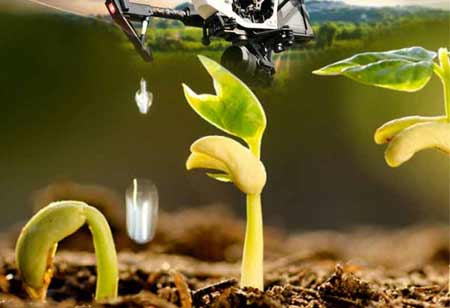By
Agri Business Review | Tuesday, June 21, 2022
Stay ahead of the industry with exclusive feature stories on the top companies, expert insights and the latest news delivered straight to your inbox. Subscribe today.
Technological advancements have revolutionized the agricultural sector. The adoption of precision farming technologies can optimize agricultural productivity cost-effectively.
FREMONT, CA: A revolution in agricultural production is possible through technological advances. A study, conducted in two stages, with experts from various fields, including production, advisory, and research, was used to identify the most promising technologies, the key drivers, and barriers to technology adoption in outdoor vegetable production.
The method comes up with realistic future scenarios based on these experts' opinions.
Technology can assist farmers in addressing the challenges they face. There are various reasons for these, including the growing global demand for food. These include issues related to the environment, including climate change, biodiversity loss, soil degradation, and water pollution, and the increasing social pressures associated with increasingly strict agricultural policies.
Farmers can optimize input allocation through new technologies, thereby reducing costs, increasing outputs, and maximizing resource efficiency. It is precisely through sensor use that farmers can better monitor their farms to apply inputs, such as fertilizers and pesticides, based on their needs. This is on the assumption that they can rely on the data collected.
There are also potential social impacts associated with precision agriculture enabling technologies (PAT), such as reduced repetitive tasks, driver relief, or working time reduction through driver assistance systems and electronic measuring systems. Despite their potential, the adoption rates of PAT are very different between geographical regions and technologies.
The barriers to the adoption of PAT are numerous. Farmer education is one obstacle to technological adoption since PAT often requires specific training. The development of this educational provision is still in its infancy in many countries. The cost of switching production systems to new digital technologies has also been widely recognized as a significant barrier to adoption. Recent research has indicated that adequate capital is the most significant predictor of adoption. Infrastructure, such as network coverage, is another barrier to adoption.
In the next decade, experts predict steady increases in PAT adoption in vegetable farming due to the high level of adoption currently present. Research shows various measures that can help the adoption process. Managing digital technologies requires skills and IT knowledge on an individual level. Government policymakers are responsible for ensuring that basic IT skills are included in the compulsory schooling of a country. Agriculture training must include PAT. The use of PAT can be promoted and encouraged by advisory services and farms that already utilize them.
A farm's technology costs are an important barrier overcome with financial support or through regulations that incentivize switching to modern technologies. Agricultural education and advisory services should be provided to farmers for free for these measures to reach their full potential. In fostering technology adoption, keeping this in mind when training and implementing policies is helpful. Natural resource preservation regulations and climate change will put further pressure on agriculture. PAT can be essential to meeting these challenges in the future. 





